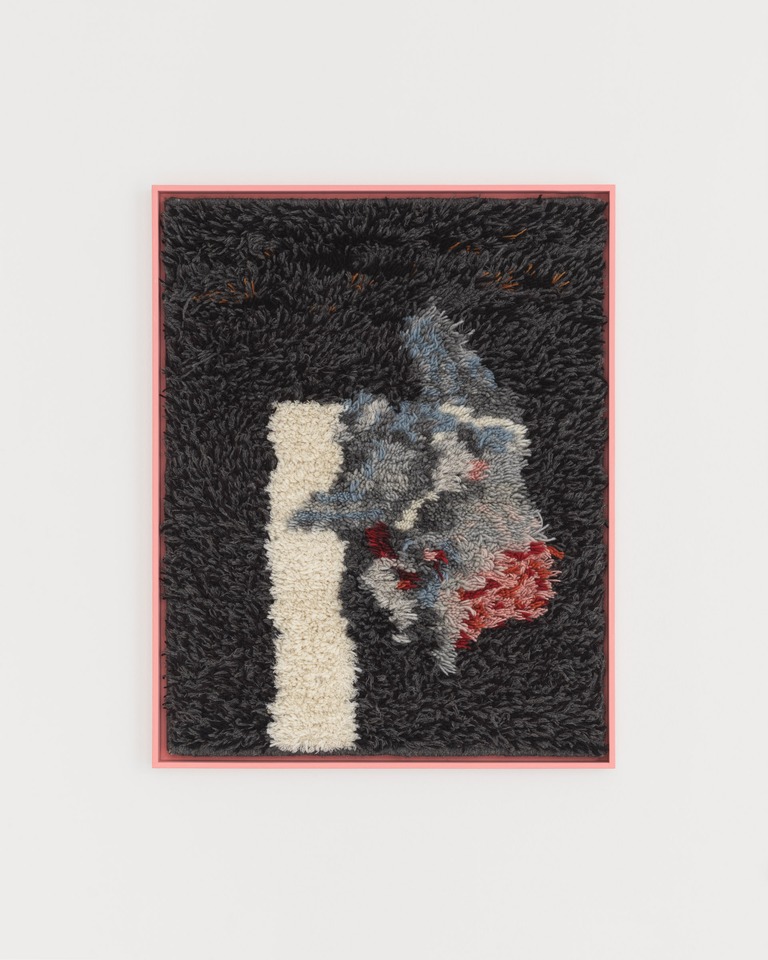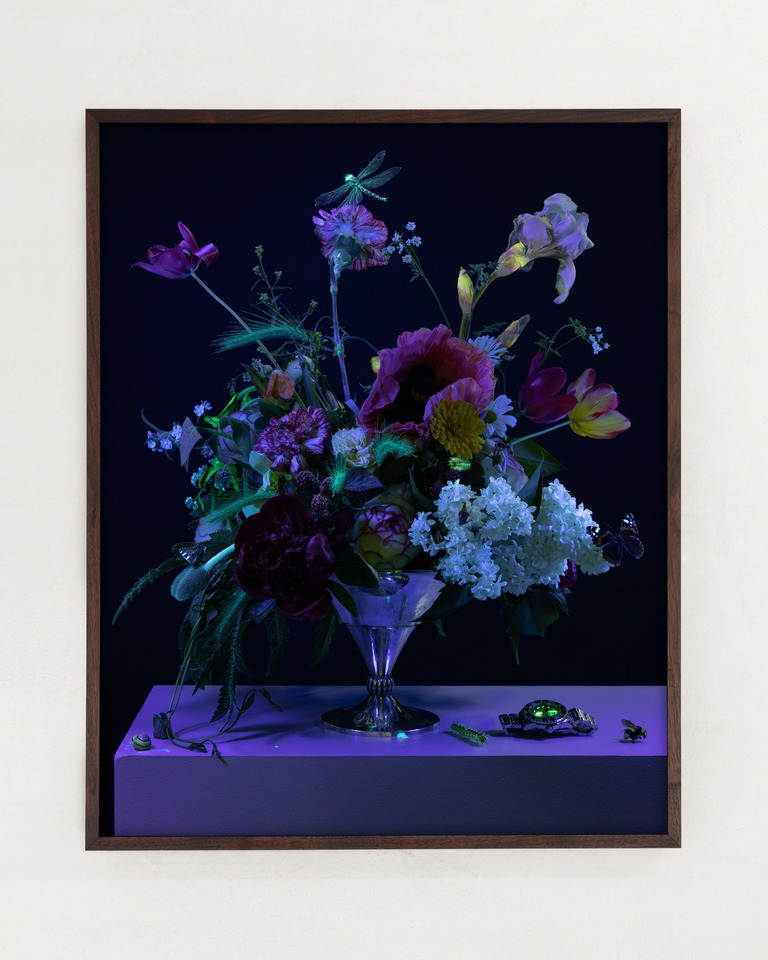“Right now, in my Anthropomor-phizer, you can find a moose and an old pine tree.”

Getting to know Emilia Bergmark: A chat exchange
by
Hester Koper - von Bartha Team
Emilia, where in the world are you at this very moment, and what are you doing?
I am sitting in a studio at the Danish Art Workshops in Copenhagen, working on a public art commission for Mørkhøj Park outside the city in the Gladsaxe Municipality. The work will be installed this summer and revealed with a grand opening in September. And while I look out at the water, the Danish sun is shining in through the big windows.
But you're Swedish at heart, right?
I grew up in the northern part of Sweden and moved to Copenhagen about eight years ago. After my studies in Amsterdam and London, I joined the sculpture department at the Royal Danish Art Academy in Copenhagen and stayed. Copenhagen is convenient to get everywhere on a bike in half an hour and big enough to have lots of great museums, galleries, and arts-workshops, so it’s perfect. But I do miss a good mountain, and a big ol’ forest. So sometimes I must get out of the city to settle my pining for pine trees.
You mention nature. It plays a significant role in your work. Can you tell us something about your process – how do you get from idea to object?
In my work, I am interested in visualizing how humans throughout history have shaped and exploited the natural world according to their needs. Sometimes an artwork can start with a simple observation, such as seeing a road-kill pigeon on the street. A flat pigeon is a striking image of human impact.
Other times, my work is more forgiving and results from a long research process that often starts with a place. Like with my project, Human Nature, a series of narrative tapestries about the changing landscape of Scandinavia: The work* Norrlands Flora in Colour* started with my childhood meadow, in the village of Vigge in northern Sweden.
The triptych that was part of our exhibition, Terravision, in Copenhagen last year.
In 2022, I returned to Vigge in Sweden and found my childhood landscape transformed. Tall invasive plants had taken over the meadow. Most of the flowers I remembered were still there, but they were outnumbered and pushed aside by large dandelions and lupine flowers. The change struck me. It portrayed the facts I had read about our current biodiversity crisis in the most visceral way.
I wanted to tell that story of the meadow and somehow visualise that change in my work Norrlands Flora in Colour from left to right, from panel to panel.
You also snuck a self-portrait in there, picking those precious flowers! (Loving the shoes by the way)
When I was in Vigge that summer I remembered my childhood summers. I thought about the childish and romantic-ish act of picking wildflowers and suddenly the violence of the act struck me. In all its innocence, picking flowers is another way we plunder nature.
Despite this morbid after-taste of flower-picking and my knowledge about the biodiversity crisis, I still can't help myself today! I see a beautiful flower, I want it, I take it, and I kill it. And maybe that's human nature after all. This small act seems a far cry from oil drilling, cutting down the Amazon forests, and shooting the last dodo, and maybe it's not...
How do you choose the medium and material for such a story?
Often, I feel like an object, or a story wants to be told, and it knows which material it wants to be told by, all I have to do is follow its lead. In the case of Norrlands Flora in Colour my mother had a bunch of yarn that she dyed in the eighties, using local plants from the north of Sweden. It made so much sense to use this material to tell the story of the disappearing meadows of Sweden. The history of the material ties in with the motif. You know, the yarn was made from wool from sheep that used to eat grass on the meadows. The beautiful, rich earthy colours were extracted from herbs and wild flowers. When I worked on the loom to weave the yarn into a portrait of the flora of Vigge it felt like closing a circle.
While reading about your work, I kept coming across the word anthropomorphism (and had to google its great meaning). Could you explain?
When you put it like that, it sounds like I have this secret weapon hidden in the backroom of my studio “THE ANTHROPOMORPHIZER.” Like a super-villain-weapon where you place a teacup in a laser beam and the teacup comes out with arms and legs, tap dancing! Because that’s what it means, anthropomorphism is to apply human emotions or features to a thing that is not human. Like in the Disney movies – with the talking ducks, and teapots that can sing.
Emilia, YOU are the secret weapon! What will you anthropomorphize next?
Right now, in my “ANTHROPOMORPHIZER” you can find a moose and an old pine tree. I’m working on the next part of the series Human Nature, and this time I’m making two large tapestries about the Swedish forest. Following on from the work Verdens Ende, in which the birds became the protagonists, the moose and the pine tree are now the narrators, telling us the story about their environment from their perspective.
I like to use anthropomorphism as a tool because we humans tend to look at the world from our own perspective, instead of those affected by our actions. That’s the whole thing about the Anthropocene, right? We humans change the whole world according to our needs. We looked at a forest, and we needed toilet paper, so we cut down the forest to make toilet paper.
I can’t wait to see them live! When will these new works be on view?
I am very excited to show the work at von Bartha, in Basel in January 2026 for my first solo exhibition at the gallery and my first show in Switzerland.
For those who would like to see it earlier, they get a chance during a travelling solo exhibition, Clear-Cut, at Orsa Kulturhus in Sweden from June 18 to August 8, 2025, or from October 9 to November 9, 2025, at Cantina in Aarhus, Denmark.








